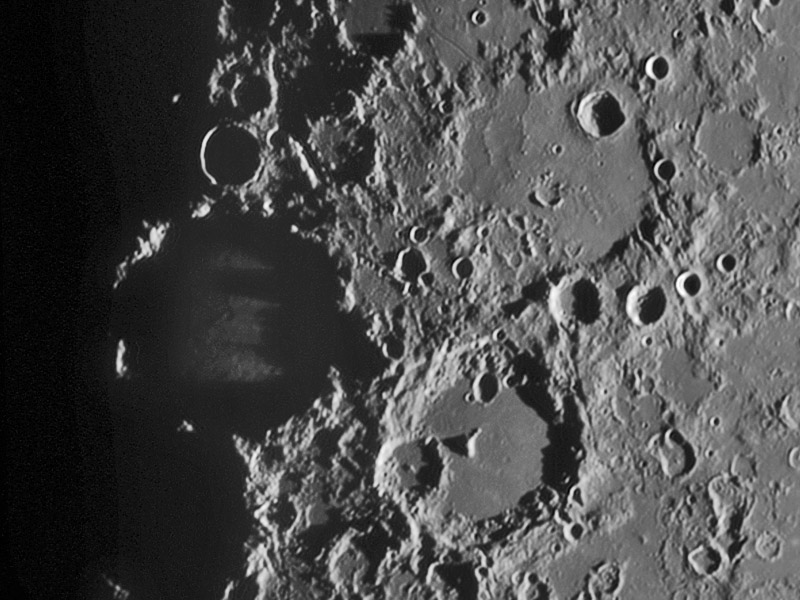Difference between revisions of "May 23, 2018"
| Line 16: | Line 16: | ||
<br /> | <br /> | ||
<strong>Related Links</strong><br /> | <strong>Related Links</strong><br /> | ||
| − | Rükl plate [https://the-moon.us/wiki/ | + | Rükl plate [https://the-moon.us/wiki/Rükl_44 44]<br /> |
Jim's astro [http://www.lafterhall.com/astro.html website]<br /> | Jim's astro [http://www.lafterhall.com/astro.html website]<br /> | ||
<br /> | <br /> | ||
Latest revision as of 19:54, 18 August 2018
Ramparts
Originally published January 28, 2009

image by Jim Ferreira, Livermore, California
Every image of the Moon tells multiple stories. Which shall this be - the lines of valleys resulting from scouring and secondary cratering from Imbrium? The saucers on the floor of Albategnius, buried by smooth Imbrium ejecta? Or the irregular rim of Ptolemaeus revealed by the shadows half way across its floor? No. No. Yes, the shadows remind me of an old fortress with a tower on one end and a serrated wall with the occasional staff flying flags and pennants. The columnar-looking tower shadow is cast by the broad massif or peak Ptolemaeus Eta, which rises about 2.7 km above the crater floor. The serrated wall shadow is from both an unnamed ridge east of Ptolemaeus near the crater Albategnius G and from the 1.5 km high rim peak Ptolemaeus Theta. I am not quite sure which peak casts the shadow of the staff, but despite its needle-like appearance it is probably just a minor high point. Why are crater rims so irregular in height? Various reasons from being broken by later impacts to the target terrain being uneven, but one thing is sure. When traversing the surface of the Moon, future travellers will be happy for breaks in rims that provide passes in and out of craters.
Chuck Wood
Technical Details
4" ED refractor + DMK21AU04.
This is another image I found within the LPOD Photo Gallery - what a resource!
Related Links
Rükl plate 44
Jim's astro website
Yesterday's LPOD: It's Only a Paper Moon
Tomorrow's LPOD: An Oblique Impact
COMMENTS?
Register, Log in, and join in the comments.



